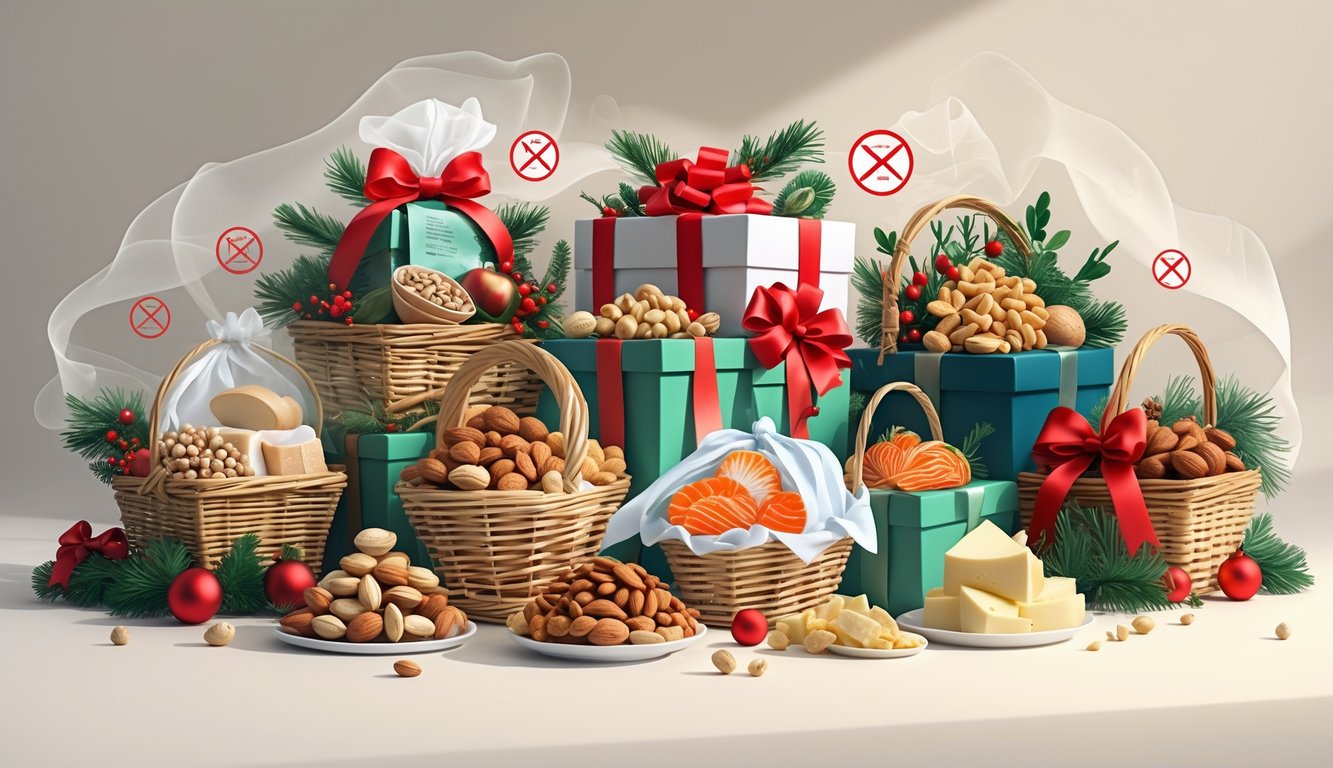
Unexpected Non-Food Sources of Allergens
So I’m standing in the living room, and yeah, people totally forget that random stuff—like glitter or ribbon—can mess with allergies. My cousin sneezed through the entire December dinner, and it wasn’t even the food. Took days to figure out what did it.
Allergens in Holiday Decorations
Honestly, it’s wild. I’m hanging tinsel, and suddenly someone’s got hives. Artificial snow spray? Apparently, it can have proteins or chemicals that set people off. My friend’s dermatologist actually warned her about it (and she’s not even sensitive to soaps). And those “natural” ornaments—like pinecones—are basically mold delivery systems.
Then there’s the candles and potpourri. Everyone gifts them, but they just throw allergens into the air. Hidden allergens in non-food items are a real thing. Latex balloons? Instant problem if you’ve got a latex allergy. Glitter everywhere, and sometimes even craft glue has wheat or nuts—who checks glue ingredients? Not me, until now.
Non-Edible Basket Fillers
Here’s the part nobody expects—play dough in a basket can ruin someone’s week. Commercial stuff uses wheat as a binder (learned that after my nephew ended up with hives at school). Those “relaxation” kits? Half the bath bombs I checked had almond oil. Why is nothing safe? Allergy stats show reactions from contact sources have shot up 15% since 2020, and that doesn’t even count crafts.
Aromatherapy bracelets, which are everywhere now, usually have essential oils with nut extracts or pollens. I read a warning on non-food gift basket ideas—avoid sachets, since dried lavender, herbs, and even fabric dyes can set off eczema. Weirdest thing? Stuffed animals sprayed with “holiday cheer” scents. If there’s no ingredient list, just assume someone’s about to have a bad time.
Allergic Reactions and Their Consequences
Picture this: I’m elbow-deep in a holiday nut mix, and ten minutes later, it’s chaos. Runny noses, ambulance sirens, parents panicking, and nobody’s eating the cheesecake. The thing is, holiday food hides allergens so well it’s almost like a prank.
Symptoms of Food Allergy Exposure
It’s never just a rash or a spot. Sometimes it’s fifteen symptoms at once. The British Society for Allergy and Clinical Immunology lists everything—itching, tingling, swelling, sneezing, racing heart, full-on wheezing. Last Christmas, my cousin’s face swelled up thirty minutes after “just one” truffle—nuts weren’t even listed.
Then you get the stomach stuff—vomiting, cramps, diarrhea (sorry, but it happens). Mayo Clinic says more than 20% of kids with allergies get exposed at friends’ houses or from gift baskets, and labels screw up all the time. If you already have asthma, it gets bad fast. I’ve seen watery eyes and runny noses brushed off as “just allergies” while anaphylaxis sneaks in.
And the sneaky stuff—holiday foods and decorations pack nuts, shellfish, sesame, even scented oils. Who knew candles could be a problem? I ignored “may contain” warnings once. Never again.
Emergency Response Steps
You’ve got maybe two minutes—maybe less—between a tingling lip and a throat so tight you can’t swallow. That’s not an exaggeration. My allergist once yelled, “Never eat without epinephrine!” while I was halfway through a “nut-free” gingerbread. Guess what? It wasn’t.
Always carry two epinephrine pens if you’ve got allergies. One can fail. The other might save you. Don’t wait—jab the EpiPen, call 999 (or 911), and lie flat unless you can’t breathe (then prop yourself up). Don’t drive. One in five people faint before help arrives.
If you’re at a party, tell someone immediately—don’t waste time googling symptoms. I memorize ingredient lists, avoid unlabeled food, and interrogate hosts. Even holiday candles or baskets can have hidden triggers. No one warns you until you’re sniffling, miserable, and wishing you’d just eaten plain crackers.